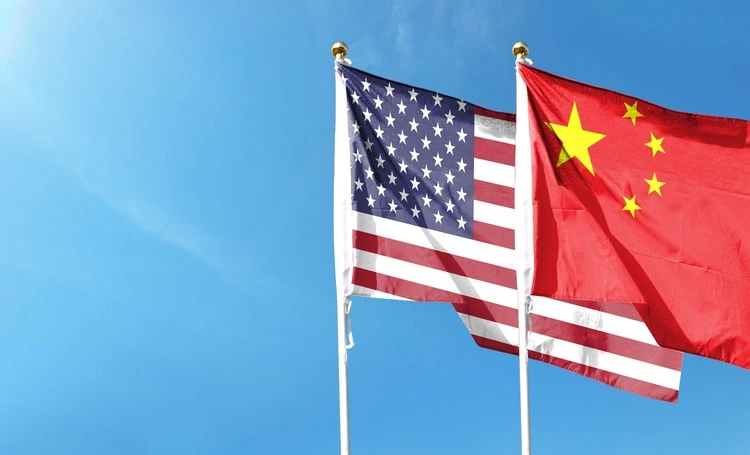
Trump’s announcement of tariffs hitting 180 countries has raised major questions over the future of global trade
By
‘This is one of the most important days, in my opinion, in American history.’ That’s what President Trump remarked at a White House conference on Wednesday, which laid out a set of sweeping ‘reciprocal’ trade tariffs hitting 180 territories and countries around the world.
For a president who declares ‘tariff’ to be the most beautiful word in the dictionary, 2 April was a good day.
Enjoying this article? Check out our related reads…
The controversial tariffs – created with the intention to bolster the US’s economy and protect American workers – will come into effect imminently and are set to impact a wide array of products imported to the US, although the White House has stipulated particular goods are currently exempt including gold, energy, lumber, pharmaceuticals and certain minerals not available in the US.
While Trump has coined the day of the announcement as ‘Liberation Day’ for the US – and may believe these new tariffs can reset world trade patterns in favour of his nation – many others do not share the same sentiment.
In fact, former chief economist at the International Monetary Fund Ken Rogoff has likened Trump’s decision to dropping a ‘nuclear bomb’ on the global trading system. Even in the mere hours following the tariff announcement, the fallout is beginning to be seen: US stock market prices have plummeted, and businesses are expressing concerns over potential job losses for their staff.
As more impacts begin to be realised, we dive into some of the countries affected and what it may mean for their economies and global trade at large.
The ‘worst offenders’
Around 60 nations and territories have been branded by Trump officials as the ‘worst offenders’ – referring to their alleged actions undermining American economic goals.
As such, the tariffs imposed on them have been extremely high. For example, China now faces an additional 34 per cent tariff (taking the nation’s total tariff on a variety of goods to 54 per cent) , while other countries face similarly large penalties (Cambodia at 49 per cent, Vietnam at 46 per cent and Thailand at 36 per cent). Others majorly affected include Taiwan (32 per cent), South Africa (30 per cent) and Japan (24 per cent), alongside the European Union (20 per cent).
Already, Trump’s decisions have been fiercely opposed by some – particularly China, whose Ministry of Commerce announced the nation will be ‘taking counter measures to safeguard its own rights and interests.’

If China do go ahead with such measures, it’ll likely prompt tension between the world’s two biggest economies and cause major ripple effects on other economies worldwide.
Not only is China grappling with the sizeable tariffs set to its own country, but also those enforced in neighbouring Vietnam, Laos and Cambodia, where many Chinese businesses shifted their production lines to since Trump first announced tariffs back in 2018. With these nations now also hit, previous attempts to ‘rejig’ supply chains are further complicated and will prove ‘prohibitive’ for China, according to professor at INSEAD business school, Pushan Dutt.
Trump’s decision to impose high tariffs on these countries may also have the inadvertent impact of affecting US companies producing goods there. For example, major firms like Nike, Apple and Intel – which all have large facilities in Vietnam – are expected to reduce staff numbers if these new tariffs go ahead.
Another area left reeling from Trump’s latest announcement is the EU. If negotiations to drop tariffs are not successful, the EU has expressed its consideration of carrying out retaliatory action to the US.
President of the European Commission Ursula von der Leyen has already warned Trump that the tariffs would ‘hurt consumers around the world’ and cause the global economy to suffer. Potential measures that the US could be hit with include restrictions on JP Morgan’s business in Europe, greater taxes for Facebook and Meta, and limiting the intellectual property rights of US companies.
If the EU decided to take retaliatory action in the form of 20 per cent tariffs to US imports, this could also cause another conundrum: a major price manufacturing difference between Northern Ireland and Great Britain. This is due to the Windsor framework – a post-Brexit agreement that allowed for Northern Ireland to continue free trade to the EU – and means Northern Ireland would also have any EU tariffs applied to it.
Canada and Mexico
The two largest trading partners with the US, Canada and Mexico, have been spared from any tariff increases in Trump’s latest set of measures. But the countries are still bound by the existing tariff of 25 per cent that exists for auto exports, steel and aluminium, first announced by Trump back in February.
These existing tariffs may have a far-reaching impact on both countries’ GDP – according to JP Morgan, exports to the US comprise 32 per cent of Mexico’s GDP and 21 per cent of Canada’s. Over five years, these 25 per cent tariffs could reduce Mexico and Canada’s GDP by 1.7 per cent and 1.2 per cent, respectively, and cause inflation in each nation.
Baseline tariffs
The lowest tariff Trump has enforced is 10 per cent: hitting a total of 130 countries and territories across the world ranging from African nations such as Kenya, Ghana, Ethiopia and Tanzania, alongside the UK, New Zealand, Argentina, Singapore and Turkey.
Although this tariff level may seem modest compared to those above, they are likely to still have significant impacts. For example, if any country decides to take equal measures on US imports, prices of US goods will increase in the country and could shift consumer habits to cheaper alternatives.
For the UK, other knock-on effects could include instability in pensions and investments, alongside job insecurity for industries – such as the automobile sector – exporting heavily to the US.




